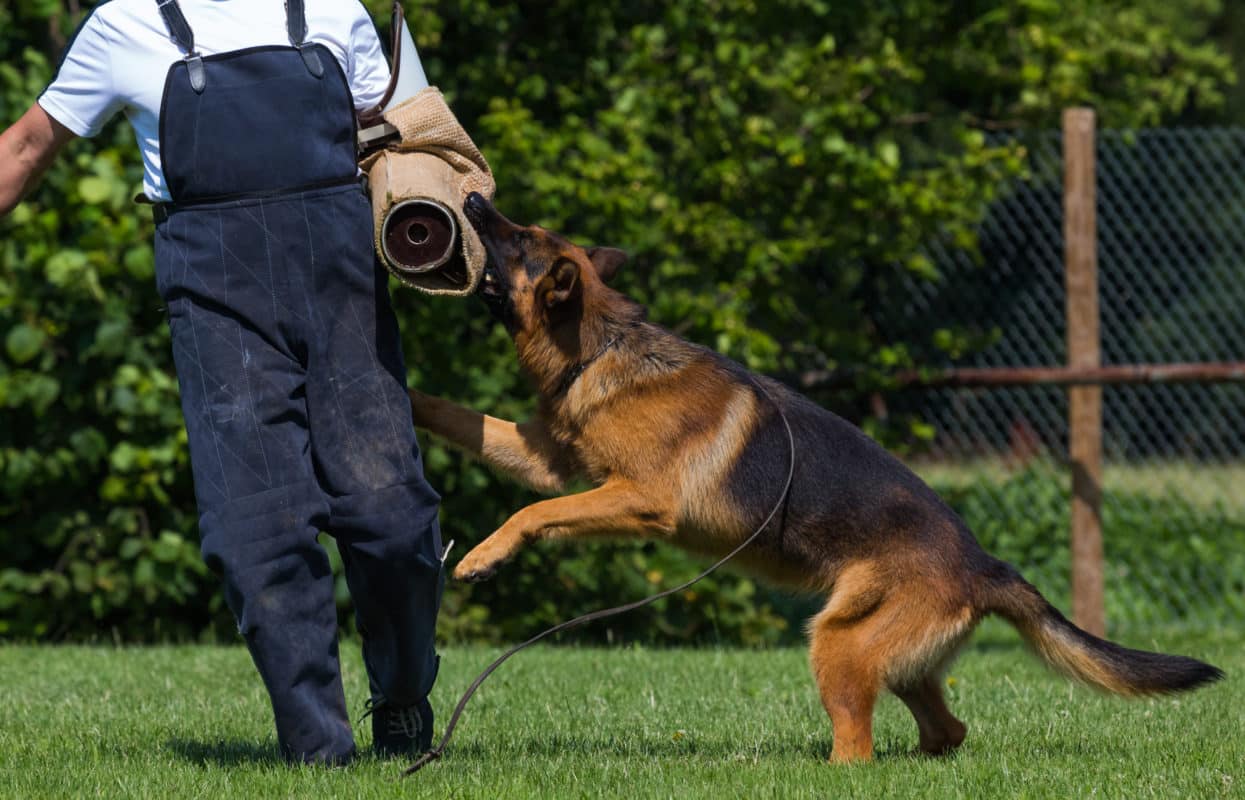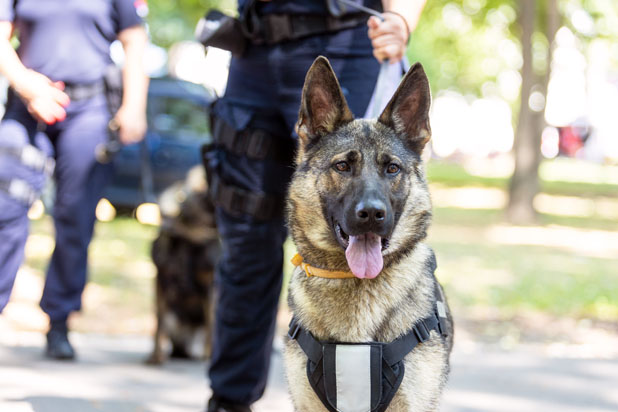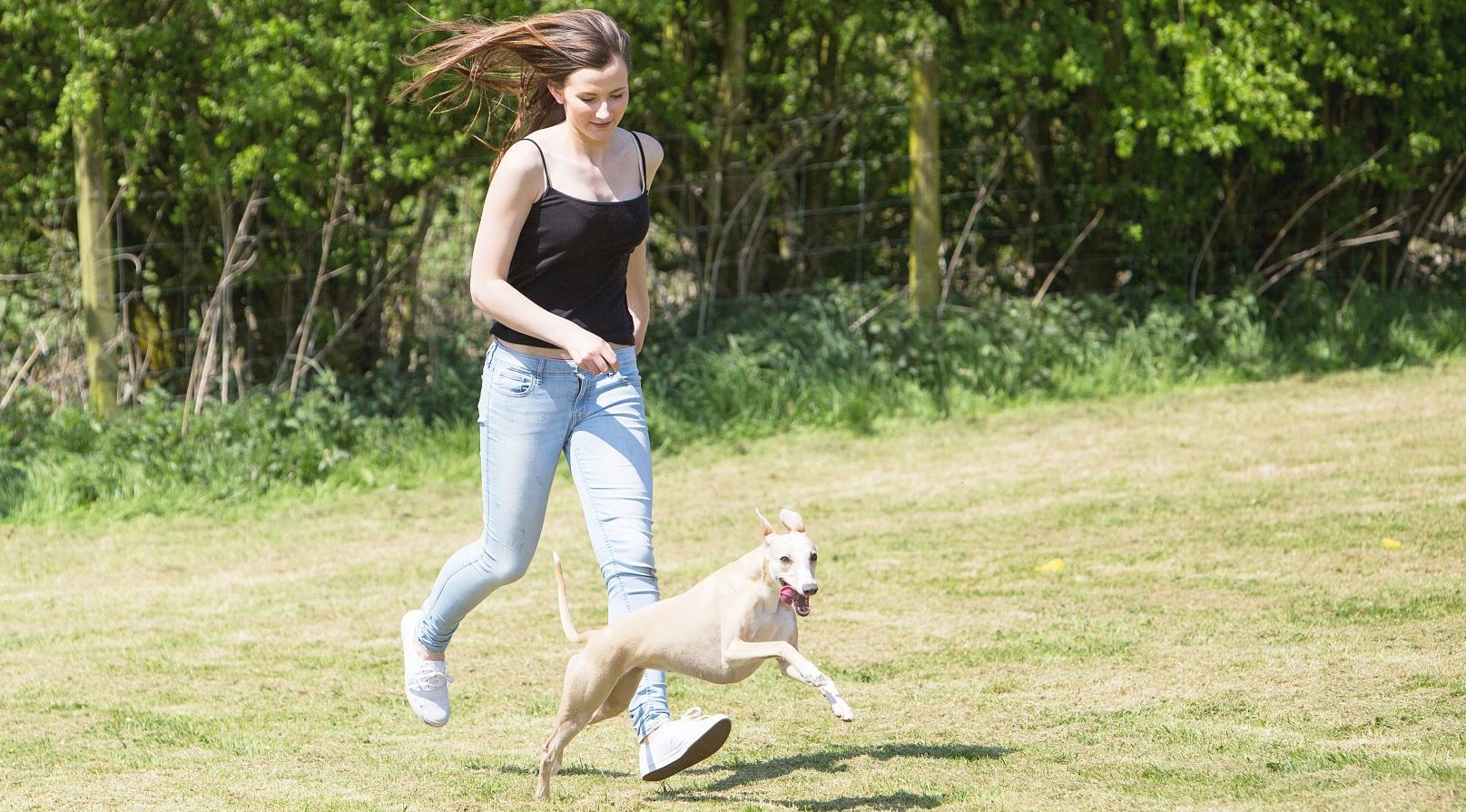What is a Canine Handler and What Do They Do?
A canine handler, also known as a dog handler or K9 handler, is a professional responsible for training, handling, and caring for dogs in various settings. These individuals work in diverse industries, including law enforcement, search and rescue, the military, and private security. Canine handlers play a crucial role in utilizing dogs’ unique abilities, such as their keen sense of smell and agility, to achieve specific goals. For instance, a police dog handler may work with a dog trained to detect narcotics or explosives, while a search and rescue dog handler may work with a dog trained to locate missing people.
In addition to their primary responsibilities, canine handlers must also provide daily care and maintenance for their dogs, including feeding, grooming, and exercising them. They must also develop strong bonds with their dogs, built on trust, respect, and clear communication. This bond is essential for effective teamwork and successful outcomes in various missions and operations. Canine handlers must also stay up-to-date with the latest training methods, technologies, and best practices in the field to ensure their dogs remain effective and safe.
Some people may refer to canine handlers by other names, such as dog trainers or K9 officers. However, these titles may not accurately reflect the full scope of a canine handler’s responsibilities. A dog trainer, for example, may specialize in training dogs for specific tasks, but may not necessarily work with them in real-world scenarios. A K9 officer, on the other hand, may be a law enforcement officer who works with a dog, but may not necessarily be a trained canine handler. Understanding the nuances of these titles is essential for appreciating the complexity and importance of a canine handler’s role.
As the use of dogs in various industries continues to grow, the demand for skilled and dedicated canine handlers is increasing. These professionals play a vital role in leveraging the unique abilities of dogs to achieve critical objectives, and their work has a direct impact on public safety, national security, and community well-being. Whether they work in law enforcement, search and rescue, or the military, canine handlers are essential members of their teams, and their expertise and dedication are invaluable assets.
Alternative Titles for Canine Handlers
Canine handlers are often referred to by various titles, each with its own nuances and connotations. Some common alternative names for canine handlers include dog handler, K9 handler, police dog handler, and detection dog handler. While these titles may seem interchangeable, they often reflect specific aspects of a canine handler’s role or the industry they work in.
A dog handler, for example, may be a general term used to describe anyone who works with dogs, regardless of the specific context or industry. This title may be used in a variety of settings, such as search and rescue, therapy work, or competitive dog sports. In contrast, a K9 handler typically refers to a law enforcement officer who works with a police dog, often in a patrol or detection capacity.
A police dog handler is a more specific title that reflects the handler’s role in law enforcement. These individuals work closely with their dogs to detect and apprehend suspects, locate evidence, and maintain public safety. Detection dog handlers, on the other hand, may work in a variety of industries, including law enforcement, customs, and private security. Their primary responsibility is to train and handle dogs that detect specific substances or items, such as narcotics or explosives.
Another name for canine handler is a K9 officer, which typically refers to a law enforcement officer who works with a police dog. However, this title may not necessarily imply that the individual is a trained canine handler. A K9 officer may be responsible for a variety of tasks, including patrol work, crowd control, and evidence collection, in addition to handling a police dog.
Understanding the different titles and their nuances is essential for appreciating the complexity and diversity of canine handling careers. Whether referred to as a dog handler, K9 handler, police dog handler, or detection dog handler, these professionals play a critical role in leveraging the unique abilities of dogs to achieve specific goals and objectives.
The Skills and Qualities Required to be a Successful Canine Handler
To excel as a canine handler, an individual must possess a unique combination of skills and qualities. Effective communication is critical, as canine handlers must be able to clearly convey commands and instructions to their dogs, as well as communicate with colleagues and stakeholders. Physical fitness is also essential, as canine handlers often work in demanding environments and must be able to keep up with their dogs’ energetic pace.
Emotional stability is another vital quality for canine handlers, as they often work in high-stress situations and must remain calm and composed under pressure. This is particularly important when working with dogs that may be anxious or fearful, as a handler’s emotional state can have a direct impact on the dog’s behavior. Canine handlers must also be patient, persistent, and able to think critically and solve problems effectively.
In addition to these essential skills and qualities, canine handlers must also possess a deep understanding of canine behavior and psychology. This includes knowledge of dog body language, learning theory, and behavioral modification techniques. By combining this knowledge with their skills and qualities, canine handlers can build strong, effective relationships with their dogs and achieve their goals.
Real-world scenarios illustrate the importance of these skills and qualities. For example, a search and rescue canine handler must be able to communicate effectively with their dog to locate missing people, while also navigating challenging terrain and coping with the emotional demands of the job. A police dog handler must be able to remain calm and composed during high-stress situations, such as pursuits or arrests, while also ensuring the safety of their dog and the public.
Another name for canine handler, such as a K9 handler or detection dog handler, may require specialized skills and qualities, such as knowledge of specific detection techniques or experience working in a particular industry. However, the core skills and qualities required to be a successful canine handler remain the same, regardless of the specific title or industry.
How to Become a Canine Handler: Education, Training, and Certification
Becoming a canine handler requires a combination of education, training, and certification. While the specific requirements may vary depending on the industry or employer, there are some general guidelines to follow. A high school diploma or equivalent is typically the minimum educational requirement, although many canine handlers hold associate’s or bachelor’s degrees in fields such as animal science, biology, or psychology.
Training programs for canine handlers are available through various organizations, including law enforcement agencies, search and rescue teams, and private training facilities. These programs typically include both classroom and hands-on instruction, covering topics such as canine behavior, training techniques, and handling procedures. Many programs also offer specialized training in areas such as detection, patrol, or search and rescue.
Certification is an important step in becoming a canine handler, as it demonstrates a level of expertise and competence in the field. The Certification Council for Professional Dog Trainers (CCPDT) offers a Certified Professional Dog Trainer (CPDT) certification, which is recognized industry-wide. Other certifications, such as the National Association of Professional Pet Sitters (NAPPS) Certified Professional Pet Sitter (CPPS) certification, may also be relevant depending on the specific industry or employer.
In addition to formal education and training, many canine handlers also pursue specialized certifications or training in areas such as first aid, CPR, or emergency response. These certifications can be beneficial in emergency situations and demonstrate a commitment to providing the highest level of care for both humans and animals.
Another name for canine handler, such as a K9 handler or detection dog handler, may require specialized training or certification. For example, a K9 handler working in law enforcement may require certification in areas such as narcotics detection or patrol procedures. A detection dog handler working in a private security firm may require certification in areas such as explosives detection or surveillance.
Regardless of the specific title or industry, becoming a canine handler requires a strong foundation in education, training, and certification. By pursuing these opportunities, individuals can develop the skills and expertise necessary to succeed in this rewarding and challenging field.
The Benefits and Challenges of a Career as a Canine Handler
A career as a canine handler can be highly rewarding, offering a unique combination of personal and professional fulfillment. One of the most significant benefits of this career is the opportunity to work with dogs, building strong bonds and relationships with these intelligent and loyal animals. Canine handlers also have the satisfaction of knowing that their work is making a positive impact, whether it’s in law enforcement, search and rescue, or another field.
However, a career as a canine handler also comes with its challenges. One of the most significant difficulties is the emotional demands of the job, particularly in high-stress situations such as search and rescue or law enforcement. Canine handlers must be able to remain calm and composed under pressure, while also providing emotional support to their dogs. Additionally, the physical demands of the job can be significant, requiring handlers to be in good physical shape and able to keep up with their dogs’ energetic pace.
Another challenge facing canine handlers is the importance of teamwork. In many industries, canine handlers work as part of a team, relying on their colleagues to provide support and backup. This requires strong communication and interpersonal skills, as well as the ability to work effectively in a team environment. Despite these challenges, many canine handlers find the rewards of their career far outweigh the difficulties.
For those considering a career as a canine handler, it’s essential to be aware of the potential challenges and rewards. By understanding the demands of the job and the skills and qualities required to succeed, individuals can make an informed decision about whether this career is right for them. Another name for canine handler, such as a K9 handler or detection dog handler, may also offer similar benefits and challenges, depending on the specific industry or employer.
Ultimately, a career as a canine handler offers a unique combination of personal and professional fulfillment, with the opportunity to work with dogs and make a positive impact in a variety of fields. While the challenges of the job should not be underestimated, many canine handlers find the rewards of their career to be well worth the effort.
Real-Life Examples of Canine Handlers in Action
Canine handlers have made significant contributions in various fields, including law enforcement, search and rescue, and the military. One notable example is the work of canine handlers in the aftermath of natural disasters, such as hurricanes or earthquakes. These handlers and their dogs work tirelessly to locate missing people, provide comfort to those affected, and help restore order to devastated communities.
Another example is the use of canine handlers in law enforcement, where they play a critical role in detecting and apprehending suspects, as well as locating evidence. Canine handlers have also been instrumental in combating terrorism, working with their dogs to detect explosives and other threats.
In the military, canine handlers have served with distinction, working with their dogs to detect enemy forces, locate explosives, and provide security. The bond between a canine handler and their dog is particularly strong in the military, where they often rely on each other for survival.
One notable example of a canine handler making a significant impact is the story of Sergeant Stubby, a Boston Terrier who served with his handler, Private John Robert Conroy, in World War I. Stubby became the first dog to be promoted to sergeant in the US Army and was credited with detecting gas attacks and locating wounded soldiers.
Another name for canine handler, such as a K9 handler or detection dog handler, may also be used to describe these individuals. Regardless of the title, the work of canine handlers is critical to the success of various industries and organizations, and their contributions should not be underestimated.
These real-life examples illustrate the value and importance of canine handlers in various fields. By highlighting their achievements and challenges, we can gain a deeper appreciation for the critical role they play in keeping us safe and secure.
The Future of Canine Handling: Emerging Trends and Technologies
The field of canine handling is constantly evolving, with new trends and technologies emerging to improve the way handlers work with their dogs. One of the most significant advancements is the use of positive reinforcement training methods, which focus on rewarding desired behaviors rather than punishing undesired ones. This approach has been shown to be more effective and humane, leading to stronger bonds between handlers and their dogs.
Another emerging trend is the use of technology to enhance canine handling. For example, GPS tracking devices and mobile apps can help handlers monitor their dogs’ location and activity levels, while also providing valuable insights into their behavior and performance. Additionally, advancements in equipment such as harnesses, leashes, and vests are making it easier and safer for handlers to work with their dogs in a variety of environments.
The use of drones and other unmanned aerial vehicles (UAVs) is also becoming more prevalent in canine handling. These devices can be used to locate missing people, detect narcotics and explosives, and provide aerial support for search and rescue operations. As the technology continues to evolve, it’s likely that we’ll see even more innovative applications of drones in canine handling.
Another name for canine handler, such as a K9 handler or detection dog handler, may also be impacted by these emerging trends and technologies. As the field continues to evolve, it’s essential for handlers to stay up-to-date with the latest developments and advancements to remain effective and competitive.
Looking to the future, it’s clear that canine handling will continue to play a vital role in a variety of industries and applications. As technology continues to advance and new trends emerge, handlers will need to adapt and evolve to remain effective and successful. By embracing these changes and staying focused on the core principles of canine handling, handlers can continue to make a positive impact and achieve their goals.
Pursuing a Career as a Canine Handler: Next Steps
If you’re interested in pursuing a career as a canine handler, there are several steps you can take to get started. First, research the different types of canine handling careers and the industries they serve. This will help you determine which path is right for you and what skills and qualifications you’ll need to succeed.
Next, consider volunteering or interning with a canine handling organization or agency. This will give you hands-on experience and exposure to the day-to-day responsibilities of a canine handler. You can also network with experienced handlers and learn more about the field.
Another important step is to pursue specialized training and certification. This may include enrolling in a canine handling course or program, or obtaining certification through a professional organization such as the Certification Council for Professional Dog Trainers (CCPDT).
Additionally, consider joining professional organizations or networking groups for canine handlers. These organizations often provide valuable resources, training opportunities, and networking events that can help you advance your career.
Another name for canine handler, such as a K9 handler or detection dog handler, may also require specialized training or certification. Be sure to research the specific requirements for your desired career path and take the necessary steps to prepare yourself.
By following these steps and staying focused on your goals, you can set yourself up for success as a canine handler. Remember to always prioritize the welfare and safety of the dogs in your care, and to continually seek out opportunities for growth and development in your career.






